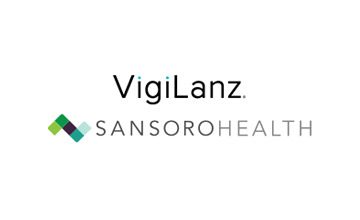Resources
Interoperability in Real Life: Practical Ways to Leverage APIs & Transform Healthcare
Interoperability between EMRs and other applications is a key challenge in healthcare today. Application Programming Interfaces (APIs) have transformed interoperability in other industries and now healthcare, too, is increasingly relying on them to solve important clinical and business problems. VigiLanz recently co-hosted a panel discussion on the topic, with one of its partners, Sansoro Health, which featured leaders from a diverse group of healthcare organizations, who shared how they use proven API solutions to successfully address complex, real-world clinical, operational and workflow challenges.
Although the three panelists were at different stages of their journey in leveraging APIs to provide better healthcare solutions, more rapidly and at lower cost, all recognize that legacy technology does not meet their needs for integration with EMRs and data liquidity.
The Longest-Established API User
As moderator of the panel discussion, David Levin, MD, Chief Medical Officer of Sansoro Health and former CMIO of Cleveland Clinic Health System, explained it’s vital to have bi-directional data flow back into EMRs to save clinicians from double documenting. It’s an issue that Peter Chang, MD, Chief Medical Information Officer, Tampa General Hospital, faced, until he implemented Sansoro Health’s Emissary® API solution to deliver efficient, real-time read-and-write EMR interaction across complete patient demographics and clinical data. The longest established API user of the group, Dr. Chang spoke about how his hospital leverages APIs to focus solely on their application and not get disrupted on the integration. Tampa General Hospital can now integrate in a matter of days across EMRs, sourcing all the data its clinicians need.
The Middle Stage of the Middleware Journey
Adam Klass, Chief Technology Officer of VigiLanz, at the middle stage of the middleware journey, spoke on how APIs reduce barriers to EMR integration and can be rapidly deployed to provide robust, real-time interoperability between complex applications. To help healthcare providers deliver real-time results and improve interoperability, he described how medical facilities today require a services-oriented architecture and API. The API must enable efficient aggregation, interaction and exchange of disparate data throughout the health care enterprise and across any of its software technologies, including EMRs and third-party vendors.
Klass, one of the company’s original founders in 2001, outlined the company’s mission of providing real-time clinical decision support to its customers by helping with all manners of manual data collection processes, using data and real-time rules engines. From pharmacy surveillance and predictive models to antimicrobial stewardship and other clinical use cases, the company relies on receiving EMR data in a timely manner. VigiLanz has always sought to answer the question of how to extract data from an EMR. It wasn’t rocket science, in Klass’ words, and yet it was challenging to collect the same data from every hospital in every EMR, in a way that enabled customers to have an intimate understanding of provider behavior through benchmarking. A creative solution was needed.
It’s one reason VigiLanz partnered with Datica Health to develop its VigiLanz Connect solution, which plugs into an organization’s EMR in less than one week for hospital IT-lite integration. Traditional integration methods are often customized for each installation, require regular maintenance and cannot be reused. Using a standard set of population-based APIs that facilitate seamless, real-time, bi-directional data flow, VigiLanz Connect normalizes data faster—and empowers clinicians to make an impact sooner. It plugs in once to deliver standardized, interchangeable APIs for seamless integration across all data sources. VigiLanz Connect has now been successfully deployed at several hospitals.
Exploring the Advantages to APIs
Matthew Cunningham, Executive Vice President of eviCore, described how his company is comprised of more than one thousand doctors and nurses in its ranks, so it needs a robust, flexible platform to identify and distribute the precise data and analytics to make informed, individual-based decisions across the 100 million lives it manages. With an understanding for the types of clinical and business problems that can be addressed with API technology, eviCore has begun to explore the advantages of commercially available APIs, like Sansoro Health’s Emissary platform.
Plug-and-play EMR integration is a reality today. Within days, hospital organizations are up and running with a standard set of APIs that work the same across EMRs. By leveraging middleware, organizations only code their application once for seamless integration across all data sources. This eliminates the need to build traditional custom interfaces for each EMR, saving significant time, resources and reducing costs – for clinicians, the hospital IT department and third-party solutions.
Unlocking Patient Safety: The Power of Autodetection in Healthcare
The key to preventing safety events and reducing harm is not about what you know is happening, but what you don’t know. Hear from Dr. Chris Emerson on how autodetection can help healthcare leaders gain visibility into the true state of patient safety inside their institutions.
Enhancing Patient Safety with Automated Event Detection: A Hospital’s Guide
Discover the benefits of autodetection, why every hospital should deploy it, and how one innovative health system is using it to enhance patient safety.
